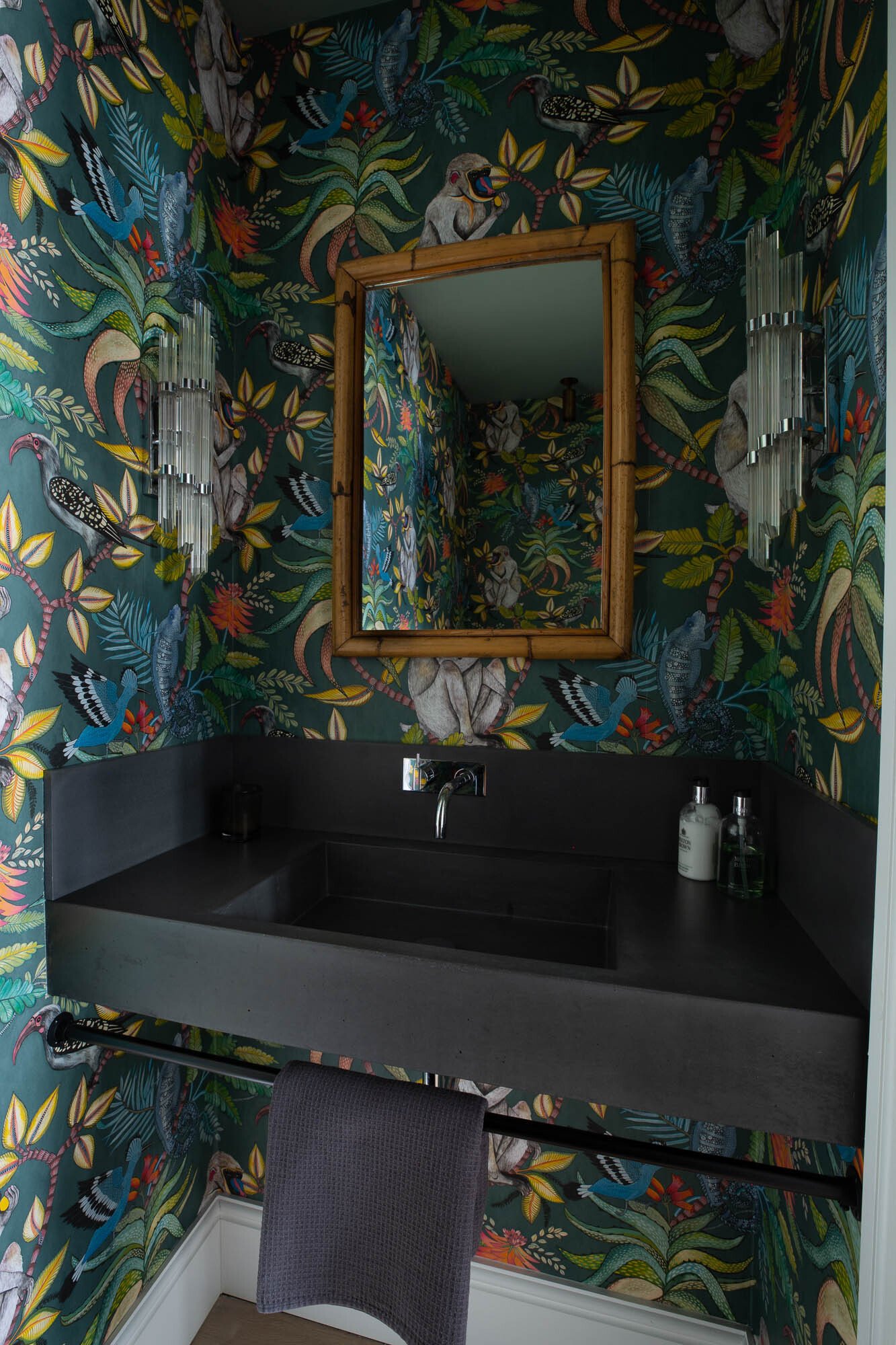Welcome to Wallcoverings
Our interior designers work hard to select the most stylish and beautiful
wallcoverings for our projects. They consider not just the colours and the
patterns, but how the textures and finishes will work with the cabinetry, veneers
and paints within each room.
Wallcoverings are often simply described as ‘wallpaper’ but in fact some of our projects include beautiful and understated wallcoverings that are constructed from fabric on a paper backing. We also work with embossed papers and vinyls that may have a fabric-like design. Textured wallcoverings add another dimension to a design scheme, with texture providing a tactile appearance and welcoming air to the room. A subtle and discreet textured wallcovering may not have an obvious pattern; it may have the appearance of a silk or woven fabric, or a woven grass-style finish. These textured designs are often used on walls which display contemporary paintings, where the surface texture of the painting is echoed in the surface texture of the wallcovering. There are wallpapers available that come in wider-than-standard rolls, in panels, or can be individually printed to the specific size of a particular wall. Our designers are highly skilled at seeking out beautiful designs to appeal to the personal preferences of each client.
On Walls & Ceilings
It is usually reasonably straightforward to decide which walls require a wallcovering. There may be an obvious ‘feature wall’ such as the fireplace wall, or the wall where the TV screen is mounted. To use a wallcovering on a feature wall is a clever interior design concept. It brings attention to that particular wall, and the adjacent walls can be painted in a toning, matching or contrasting shade. The ‘feature’ concept also includes alcoves or the wall space above fitted floor-standing cabinets. Wallcoverings on ceilings can provide a wonderful, cocooned-type feeling within a room, but the paper used should always have a non-directional pattern or texture. This means that it can be viewed from any position in the room and not look upside-down or the ‘wrong way round’. If a sloping or curved ceiling is part of the project, there will need to be a decision made as to where the ‘wall’ ends and the ‘ceiling’ starts. Often the design solution is to continue the wallcovering onto the ceiling. This idea applies to paint colours as well and is a successful option where the demarcation lines are blurred. There is then the possibility of using a picture rail or decorative plasterwork as a dividing line between wall and ceiling.
In Kitchens & Bathrooms
The choice of wallcoverings for kitchens and bathrooms extends far beyond ‘paint or wallpaper’. Ceramic or porcelain tiles have traditionally been the go-to solution for walls that need an extra layer or protection from steam, spray and water splashes. Large-scale tiles and laminate, ceramic and quartz panels can cover areas such as shower enclosures or the space between work surface and wall cabinets in the kitchen, protecting those specific areas and allowing wallpaper to be used away from the vulnerable surfaces. If a wallpaper is required in kitchen or bathroom spaces our designers will position it away from potential moisture contact and suggest a design that is suited to that environment.
Living & Bedroom Areas
Wallpaper is a flexible choice for living and bedroom spaces, with patterns and multiple colours adding life and zest to a scheme. However, for calming and soothing interiors, we will often choose subtle and textured wallpapers in discreet, soft shades. Mixing similar shades of wallcoverings and paint can produce a scheme that appears to be simple and straightforward, but which is in fact made up of carefully chosen colours and textures that provide a luxurious multi-layered scheme. Timber panelling is also an interesting choice for walls – and not just in the sense of traditional tongue-and-groove or framed, panelled styles. Our teams can design contemporary panelling to enhance different spaces, tailoring the proportions to suit the size and scale of the room. We are often working on design schemes that include bespoke built-in furniture which may take up a large proportion of wall space. That furniture may have a veneered finish - perhaps combined with inset fabric panels - so our choices for appropriate wallcoverings will need to work with those materials, either complementing or contrasting. Our architects and designers will approach each project with fresh eyes and the intention to create a scheme where each component, from bespoke furniture to paint shades and wallpaper choices work in complete harmony. The result is an interesting and perfectly balanced room.
Have a project in mind?



